Efficient logistics management is crucial for businesses aiming to enhance their supply chain operations, reduce costs, and improve customer satisfaction. Lean logistics, derived from the principles of lean manufacturing, focuses on eliminating waste and maximizing value throughout the logistics process. Let’s explore the key principles of lean logistics and provide actionable insights on how to apply them in real-world scenarios.
Streamlining the Supply Chain
To achieve lean logistics, the first step is to streamline the supply chain. This involves optimizing processes, reducing unnecessary steps, and fostering collaboration between suppliers, manufacturers, and distributors. Here are some practical tips to implement this principle:
Value Stream Mapping
In lean logistics, a value stream refers to the sequence of steps or processes required to deliver a product or service to the customer. This includes all the activities involved in sourcing, production, distribution, and customer service. Value Stream Mapping aims to identify and eliminate non-value-added activities, also known as waste, in order to improve the overall value stream.
The process of creating a value stream map involves gathering data and creating a visual representation of the entire value stream. This typically includes information on process steps, cycle times, inventory levels, information flow, and material flow. The map illustrates the flow of materials and information, as well as the time taken at each step, bottlenecks, and areas of waste.
By analyzing the value stream map, lean practitioners can identify opportunities for improvement, such as reducing cycle times, eliminating unnecessary steps, improving communication and collaboration, and optimizing inventory levels. The goal is to create a future state value stream map that represents a more streamlined and efficient flow of materials and information, resulting in reduced lead times, improved quality, and lower costs.
Supplier Collaboration
Supplier collaboration in lean logistics involves working together with suppliers to optimize the flow of materials, information, and products throughout the supply chain. It goes beyond a traditional buyer-supplier relationship and emphasizes collaboration, trust, and continuous improvement. Key aspects of supplier collaboration in lean logistics include:
- Communication and Information Sharing: Effective communication and timely sharing of information between the company and its suppliers are essential for lean logistics. This includes sharing production forecasts, demand fluctuations, inventory levels, and delivery schedules. Collaborative technologies and systems can facilitate this process.
- Supplier Development: Collaborating with suppliers to improve their capabilities, processes, and performance is crucial for lean logistics. This may involve sharing best practices, providing training and support, and working together to identify and implement process improvements.
- Joint Planning and Forecasting: Collaborative planning and forecasting help align the company’s production and inventory levels with customer demand. By involving suppliers in the planning process, it becomes easier to adjust production schedules, manage inventory levels, and reduce the bullwhip effect in the supply chain.
- Continuous Improvement: Lean logistics requires a commitment to continuous improvement throughout the supply chain. Suppliers play a vital role in this process by actively participating in problem-solving, root cause analysis, and implementing corrective actions to eliminate waste, improve quality, and enhance overall efficiency.
- Performance Measurement and Metrics: Establishing performance metrics and measuring supplier performance are essential for tracking progress and driving improvements. Key performance indicators (KPIs) such as on-time delivery, lead time reduction, and quality levels can help monitor supplier performance and identify areas for improvement.
Just-in-Time (JIT) Inventory Management
In JIT inventory management, inventory is seen as a form of waste and a potential source of inefficiency. Therefore, the goal is to reduce inventory levels as much as possible while still meeting customer demand. This is achieved by closely coordinating the flow of materials and goods with production schedules and customer orders. Here are some key features and principles of JIT inventory management:
- Demand-driven: Inventory is replenished based on actual customer demand rather than forecasts or predetermined stock levels. This approach helps avoid overproduction and reduces the risk of excess inventory.
- Continuous flow: JIT aims for a smooth and continuous flow of materials throughout the supply chain, from suppliers to production to customers. By minimizing disruptions and delays, inventory can be minimized.
- Supplier integration: Close collaboration and communication with suppliers are essential in JIT inventory management. Suppliers deliver materials or goods in small, frequent shipments to meet immediate production or customer needs.
- Reduced lead times: JIT aims to minimize lead times at every stage of the supply chain. This includes reducing setup times, processing times, and transportation times. By doing so, it enables faster response to changes in demand and reduces the need for large inventory buffers.
- Quality control: JIT emphasizes the importance of high-quality products. By maintaining high standards and reducing defects, the need for excess inventory to compensate for poor quality or rework is minimized.
- Kanban system: A kanban system is often used in JIT inventory management to control the flow of materials and goods. It involves visual signals or cards that indicate when to produce or reorder items based on actual usage or depletion.
Continuous Improvement
Lean logistics is an ongoing process of continuous improvement. It emphasizes a culture of kaizen, where small, incremental changes are made to enhance efficiency and eliminate waste. Here are some strategies to apply this principle effectively:
- Employee Empowerment: Involve employees at all levels in identifying inefficiencies and implementing improvement initiatives. Create a culture that encourages employees to provide feedback and suggestions for process optimization. Conduct regular team meetings or workshops to brainstorm ideas for improvement and celebrate successes.
- Standardized Work: Establish standardized work procedures and processes to ensure consistency and eliminate variations. Develop clear work instructions and visual aids to guide employees in performing their tasks. Regularly review and update these standards based on feedback and evolving business requirements. Provide training to employees to ensure they understand and follow the standardized processes.
- Performance Measurement: Implement key performance indicators (KPIs) to measure and monitor logistics performance. Define KPIs that align with your business goals, such as on-time delivery, order accuracy, and inventory turnover. Analyze data to identify areas for improvement and set realistic targets for continuous enhancement. Use technology solutions, such as business intelligence tools, to gather and analyze data effectively.
Eliminating Waste
One of the fundamental principles of lean logistics is the elimination of waste. Waste can take various forms, including excess inventory, overproduction, transportation inefficiencies, and unnecessary waiting times. Here are strategies to identify and reduce waste:
- Lean Warehousing: Optimize warehouse layouts to minimize travel time and improve pick and pack operations. Utilize lean tools such as 5S (Sort, Set in Order, Shine, Standardize, Sustain) and visual management techniques to enhance organization and efficiency. Regularly review inventory levels and implement strategies like ABC analysis to identify slow-moving or obsolete items and take appropriate action.
- Transportation Optimization: Analyze transportation routes and modes to minimize costs and reduce transit times. Consolidate shipments to maximize truckload utilization and reduce the number of trips. Collaborate with carriers to explore backhauls or freight pooling options. Leverage technology solutions like transportation management systems (TMS) to optimize delivery schedules, track shipments in real-time, and automate freight audit and payment processes.
- Lean Packaging: Streamline packaging processes to reduce material waste, optimize cube utilization, and enhance handling efficiency. Evaluate packaging materials to ensure they provide adequate protection while minimizing excess weight and volume. Consider reusable packaging solutions to reduce waste and improve sustainability. Collaborate with packaging suppliers to explore innovative packaging designs and materials.
Technology Integration
The effective integration of technology can greatly enhance lean logistics practices. Here are some key technological tools and solutions to consider:
- Warehouse Management Systems (WMS): Implement a robust WMS to automate inventory control, optimize space utilization, and streamline order fulfillment processes. Utilize barcode or RFID technologies for accurate and efficient inventory tracking. Leverage the system’s reporting and analytics capabilities to identify trends, optimize labor allocation, and improve overall warehouse performance.
- Transportation Management Systems (TMS): Utilize a TMS to optimize route planning, carrier selection, and load consolidation. The system should provide visibility into carrier performance, facilitate rate negotiation, and enable electronic document management. Real-time tracking and analytics capabilities enable better decision-making and performance monitoring.
- Internet of Things (IoT): Embrace IoT technologies to track and monitor assets, improve supply chain visibility, and enable predictive maintenance. IoT sensors and devices can provide valuable data for analysis and process optimization. For example, using temperature sensors during transportation can ensure product integrity for perishable goods.
Conclusion
Implementing lean logistics principles can help businesses optimize their supply chain operations, improve customer satisfaction, and reduce costs. By streamlining the supply chain, fostering continuous improvement, eliminating waste, and leveraging technology, logistics managers and supply chain professionals can create efficient and agile logistics processes. Embracing these principles in real-world scenarios will drive operational excellence and position businesses for long-term success in a competitive marketplace.


